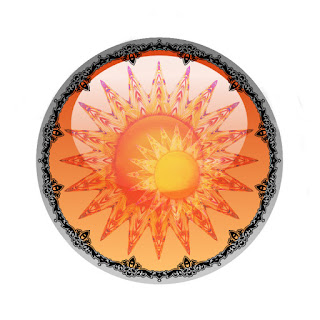Introducing the Clans - Part 1: M'Neshunnaya
If you've been following my blog for a while now, you know I write fantasy novels. You've also been introduced to some interesting words you're probably wondering how to pronounce. No worries! I've got that covered. (And you can always feel free to ask me about words and pronunciations in the comments on any blog post. I'll get to those as soon as I'm able, which may not be right away.)
I didn't purposely set out to create a massive world with tons of story options when I first started writing the Children of Y'Dahnndrya series. It sort of expanded on its own. The more I wrote, the more blanks I filled in, the more windows of story opportunity opened up in front of me. What started with a vague idea about prejudice between different cultures has branched out into a world of six clans who know about each other. But they don't really know one another. They don't know the little things that bring each clan their own sort of beauty. They don't realize they are similar in many ways.
But you don't have to remain in the dark. Well, at least not as much as the Y'Dahnndryans, anyway. Please allow me to introduce you to the Clans of Y'Dahnndrya.
The M'Neshunnayan Clan
- Name: M'Neshunnaya
- Pronunciation: Smash the 'm' and 'n' together at the beginning, sort of like the song 'Mahna Mahna' from the muppets... So you get this for the pronunciation -- mneh shun NIGH yah.
- How They Interpret Their Name: Those Who Nurture
- Clan Color: Orange
- Clan Symbol: The Sister Suns of Y'Dahnndrya (see picture above)
- Language: Shunya (SHOON yah)
- Location on the Map: Central, Southern and Eastern portions of the continent of Sheromoth (SHARE oh moth) (TH is always sounded as the 'th' of 'then'.)
- Type of Terrain: Wooded hill country in the north, plains in the west, and marshes in the south and along much of the coast.
- Religion: I haven't named it yet but they worship a single, genderless creator deity. Their worship is very organic and gatherings are held in open air temples which are part of the terrain.
- Housing: They live in homes that we would consider as leaving very little carbon footprint. They either build them into hillsides or dig them into the ground. I haven't figured out the southern/coastal type of housing yet but I know it will leave just as small a footprint on the ecology. Their homes are called 'd'gut' (a very short 'd' sound followed by an almost gutteral 'gut')
- Type of Government: Somewhere between a democracy and a republic, they look to their High Priest or Priestess for clan guidance and village elders for more local interests. The High Priest or Priestess is elected based on their conduct and achievements within the clan. The vote is democratic and the position is lifetime, unless that person attempts to become a tyrant. They are then removed from office and put to death. (Yeah, kinda harsh, I know but...)
- Current Leader: Shira Rayasdatir, mother of Yetsye, Yuvahl and Ya'el, wife of Bay'rakh Orevshoneh.
- Shrine: Each clan has a shrine which is essentially neutral ground. Levanna Stone Temple is the shrine of the M'Neshunnayans. It's located in the Levanna Plain.
- Guardian: Each shrine has a guardian appointed by the creator deity and denoted by physical changes to the appearance. (I.E. silver streaks in hair, though this can also indicate a person who has been blessed by the creator deity.) Levanna's current guardian is Zhil'la Rayasdatir, Shira's youngest sister and Yetsye's aunt.
- Naming: Children are given a surname that is their mother's first name + datir (for daughters) or + shoneh (for sons), kind of like the Vikings.
- Tolerance Level: People entering unannounced to any clan territory other than their own risk death in most cases. The M'Neshunnayans tend to be a little more lenient than some of the other clans. The only clan more tolerant than they are the Ikhel'dur.
- General Conduct: For the most part, M'Neshunnayans are happy-go-lucky. They will defend themselves determinedly and effectively if pushed into a fight, but it's rare for them to start one. They live sort of like hobbits, but they love adventures and don't eat so much. While they enjoy a good celebration, they are not prone to over-indulgence. They prize natural living, common sense, and common courtesy.
- Clothing Style: They prefer loose, flowing clothing. Depending on the area they live in, they may wear very little. In Zulima, which is in the foothills and forests, the favorite style is a loose tunic paired with wide leg pants (generally worn by females) or more fitted breeches (generally worn by males) and sturdy boots or sandals.
- Foods of the Clan: The kho'ni tree offers a wide range of food items from its leaves to its bark (medicinal tea) and on to its roots (also medicinal). Bansan berries grow profusely in their territory and are packed with vitamins. They are most known for the wide variety of fresh vegetables and fruits they harvest and nurture. They also produce a sweet wine, much like mead (honey wine), called wazha, and a stronger version for special celebrations called wazha'ne. ('zh' is sounded like a voiced 'sh'.)
- Best Exports: woven grass baskets, fine fabrics made from plant fibers, jinya (a dried leaf smoked in pipes found only in M'Neshunnaya), wazha.

.png)

Comments
Post a Comment
Leave a comment!